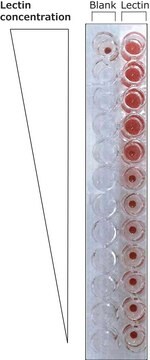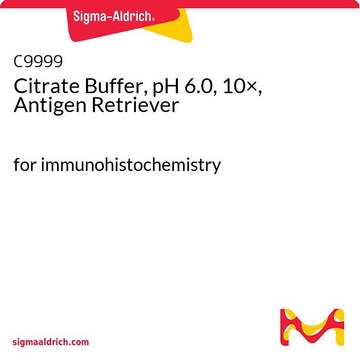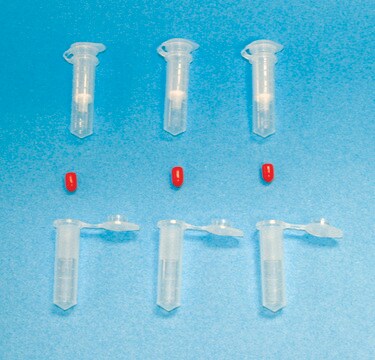L5391
Lectin from Bandeiraea simplicifolia (Griffonia simplicifolia)
Isolectin B4 (BSI-B4), peroxidase conjugate, lyophilized powder
Synonym(s):
Bandeirea simplicifolia agglutinin, BS-I
About This Item
Recommended Products
biological source
Bandieraea simplicifolia
Quality Level
conjugate
peroxidase conjugate
Assay
≥90% protein basis (Warburg-Christian)
form
lyophilized powder
potency
<200 μg per mL agglutination activity (using human blood group B erythrocytes)
peroxidase activity
40-160 units/mg protein
composition
Protein, ~95% modified Warburg-Christian
technique(s)
blood typing: suitable
fractionation: suitable
storage temp.
−20°C
Looking for similar products? Visit Product Comparison Guide
Application
- Glycoprotein sample size: 500ng
- Lectin Concentration: 0.1ug/ml
- Load samples at 500 ng of glycoprotein per lane
- Run 4-20% Bis-Tris SDS page gel
- Transfer gel to a PVDF membrane
- Block membrane for 1 hr at RT with RIPA buffer (R0278 Sigma)
- Incubate HRP lectin at 0.1ug/ml with RIPA buffer for 2 hours at RT
- Wash membrane 5 x 5 minutes with 25ml RIPA buffer
- Detect using chemiluminescent substrate (CPS1-120)
Biochem/physiol Actions
Other Notes
Unit Definition
Physical form
Preparation Note
Analysis Note
Storage Class Code
11 - Combustible Solids
WGK
WGK 3
Flash Point(F)
Not applicable
Flash Point(C)
Not applicable
Personal Protective Equipment
Choose from one of the most recent versions:
Already Own This Product?
Find documentation for the products that you have recently purchased in the Document Library.
Our team of scientists has experience in all areas of research including Life Science, Material Science, Chemical Synthesis, Chromatography, Analytical and many others.
Contact Technical Service








